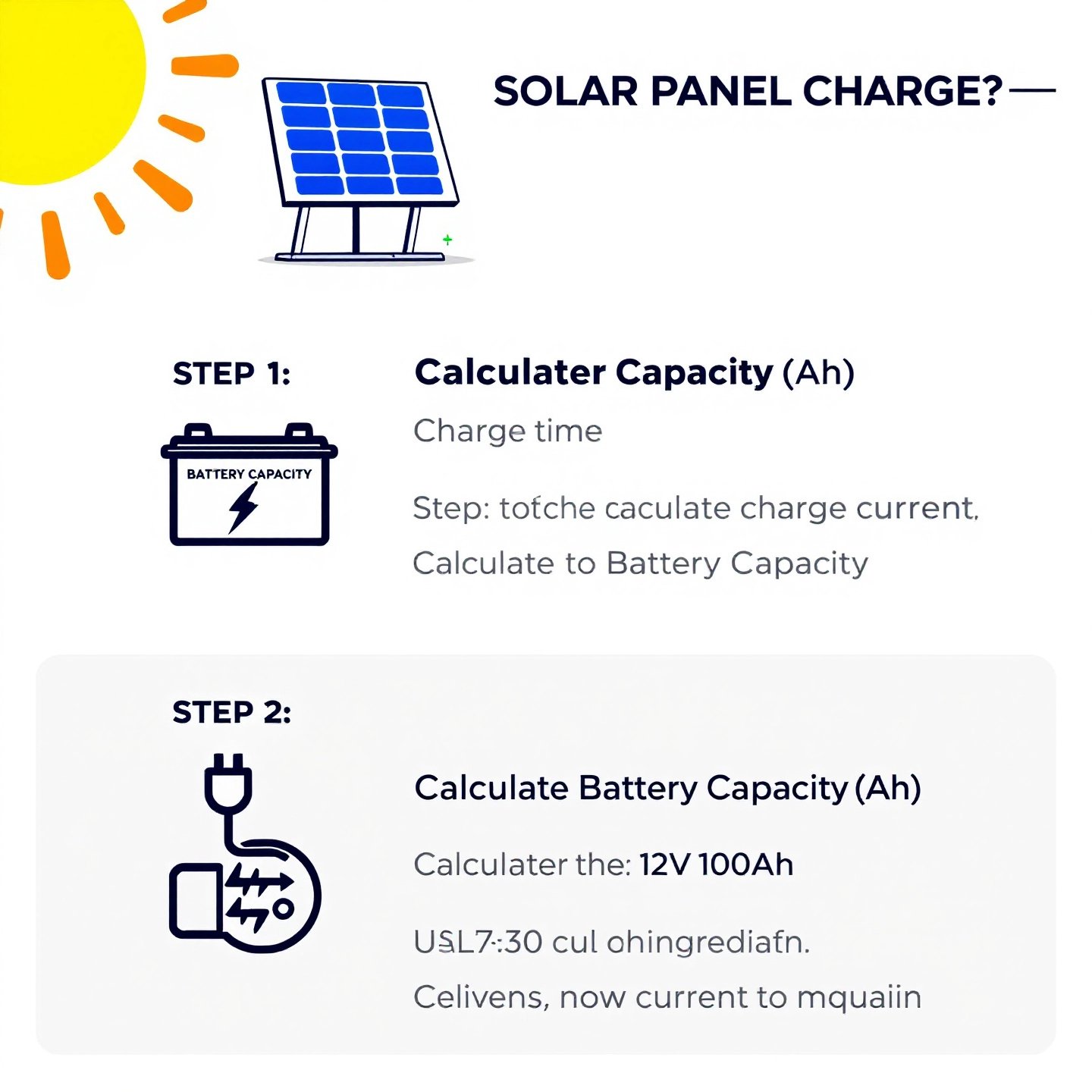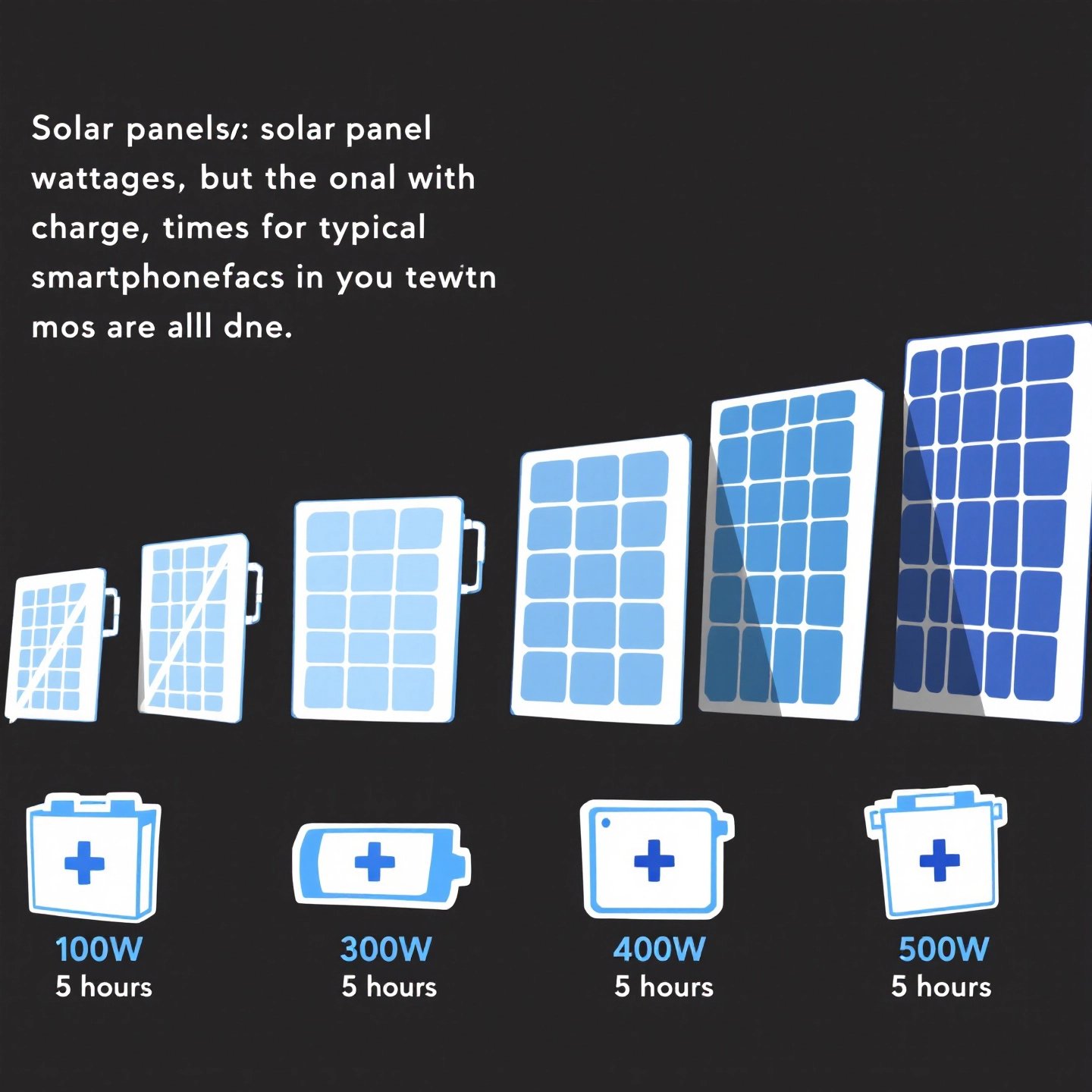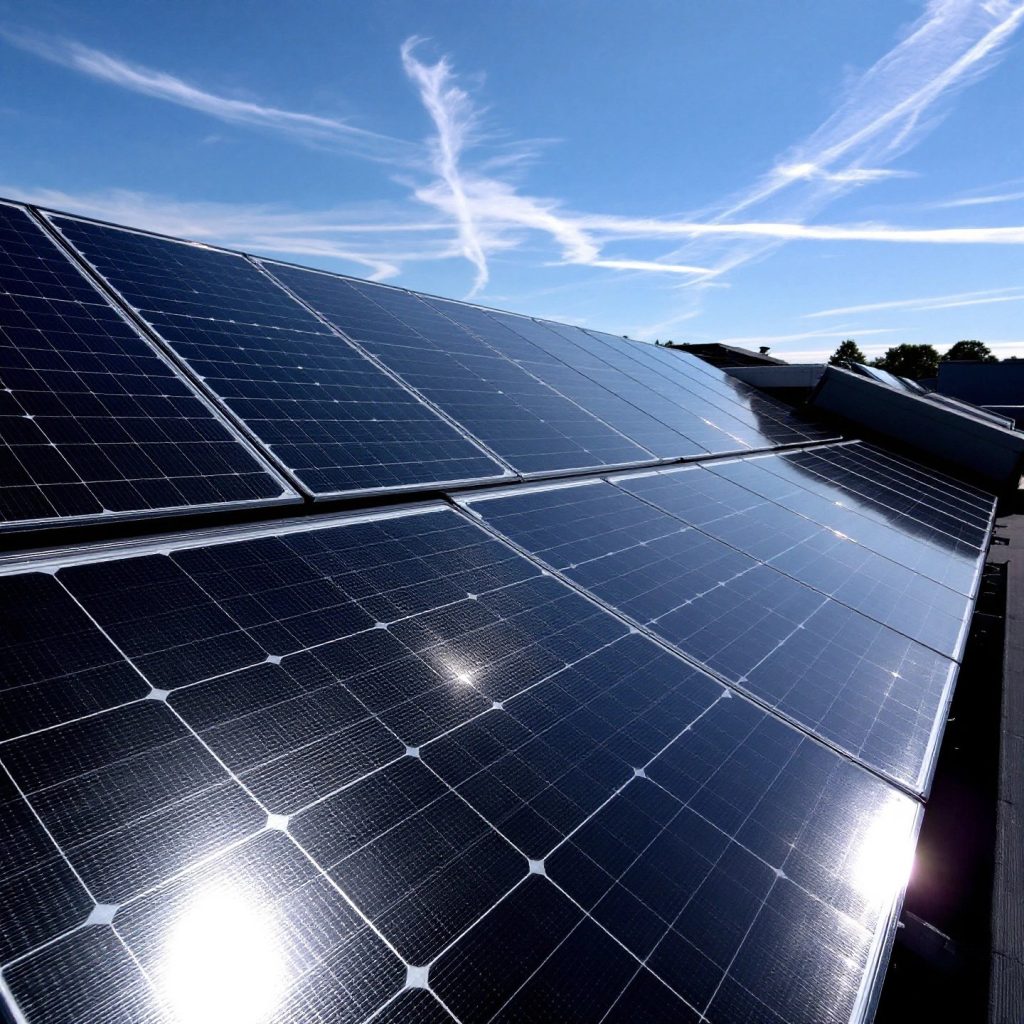Introduction to Solar Panel Charge Time Calculator
Imagine harnessing the sun’s energy to power your home efficiently. Sounds complex? Not with the right tools at your disposal. A solar panel charge time calculator is an invaluable tool for anyone looking to optimize solar energy use. It helps you estimate how long it will take for your solar panels to charge your batteries fully, ensuring you make the most out of your solar investment.
Understanding the charge time of solar panels is crucial for maximizing the efficiency and performance of your solar system. Why? Because knowing this helps in planning energy usage, ensuring that your system can meet your needs even on cloudy days or at night. By accurately calculating charge time, you can avoid over-reliance on grid electricity, reducing your bills and carbon footprint.
Several key factors influence the charge time of solar panels:
- Panel Efficiency: The efficiency of a solar panel determines how well it converts sunlight into electricity. Higher efficiency panels, like monocrystalline ones, typically charge batteries faster (source).
- Battery Capacity: This is the amount of energy a battery can store, measured in ampere-hours (Ah) or kilowatt-hours (kWh). Larger batteries take longer to charge compared to smaller ones (source).
- Sunlight Availability: The amount of sunlight your location receives directly affects charging time. More sunlight means faster charging, but seasonal variations and weather conditions can impact this significantly.
By considering these factors, you can effectively use a solar panel charge time calculator to optimize your solar setup, ensuring reliable and sustainable energy for your home or business.

How Solar Panel Charge Time is Calculated
When you think of solar panels, you might wonder how long it takes to charge a battery fully. The answer lies in understanding the basic formula for calculating solar panel charge time. This formula is crucial for anyone looking to calculate solar charge time accurately and optimize their solar energy use.
The Basic Formula
At its core, the charge time can be calculated using the formula:
Charge Time = Battery Capacity ÷ (Charge Current × Charge Efficiency)
Here, the battery capacity is measured in ampere-hours (Ah), the charge current in amps (A), and charge efficiency as a percentage. This formula gives a straightforward way to estimate how long it will take to charge your battery under ideal conditions.
Efficiency Factors and Real-World Conditions
While the formula provides a good starting point, real-world conditions significantly affect the actual charge time. Factors such as solar panel efficiency and environmental conditions play a crucial role:
- Solar Panel Efficiency: This determines how well a panel converts sunlight into electricity. Higher efficiency panels will reduce charge time, making them a wise choice for those looking to enhance their system’s performance (source).
- Environmental Conditions: The amount of sunlight available varies based on location, time of year, and weather conditions. These variations can lead to significant differences in charge times, necessitating adjustments in planning and expectations.
Step-by-Step Example Calculation
Let’s illustrate this with an example. Suppose you have a 200Ah battery, a 20A charging current, and a charge efficiency of 90%:
Charge Time = 200Ah ÷ (20A × 0.9) = 11.11 hours
This calculation shows that, under these conditions, it will take just over 11 hours to fully charge the battery. However, remember that real-world factors such as shading or panel orientation could alter this time.
Understanding and applying these calculations allows you to make informed decisions about your solar setup, ensuring efficient energy use and optimal performance. Next, we will explore the key factors that influence the speed of solar panel charging, providing further insights into optimizing your solar energy system.
Key Factors Affecting Solar Panel Charging Speed
When it comes to solar panel charging speed, several critical factors come into play. Understanding these can help you optimize your solar energy system for faster and more efficient charging. Let’s delve into the primary elements that influence how quickly your solar panels can charge a battery.
Sunlight Exposure
The amount of sunlight your solar panels receive is a fundamental factor affecting charging speed. Imagine a bright summer day; your panels are likely to generate more power compared to a cloudy winter afternoon. The sun’s position in the sky also varies throughout the day, with peak solar energy typically available between 11:00 AM and 2:00 PM. Seasonal changes and geographical location further impact sunlight exposure, which in turn affects how quickly your batteries charge (source).
Solar Panel Wattage
Solar panel wattage directly determines the potential power output of your system. Higher-wattage panels can produce more electricity under optimal conditions, which means they can charge batteries faster. For instance, a 400-watt panel will generate more energy in a given time than a 200-watt panel, assuming all other conditions are equal. This makes solar panel wattage a crucial consideration when designing a system to meet specific energy needs (source).
Battery Capacity
Battery capacity, measured in ampere-hours (Ah) or kilowatt-hours (kWh), indicates how much energy a battery can store. Larger batteries require more time to charge fully compared to smaller ones. Therefore, the battery’s size should align with your energy consumption needs and the solar panel’s output capacity to ensure efficient charging cycles.
Weather Conditions
Weather conditions, including cloud cover and temperature, significantly impact solar panel charging speed. While panels can still generate power on cloudy days, the output is reduced due to lower sunlight intensity. Additionally, high temperatures can decrease panel efficiency, leading to slower charging. Regular maintenance, such as cleaning panels to remove dust and debris, can help mitigate some weather-related issues, ensuring consistent performance.
By considering these factors, you can better understand how to optimize your solar panel system for faster charging. Whether it’s adjusting panel orientation to maximize sunlight exposure or selecting the right wattage for your needs, each decision plays a vital role in enhancing your solar energy setup. In the next section, we will explore how different solar panel wattages affect charge time, providing further insights into choosing the right panels for your system.

Choosing the Right Solar Panel for Faster Charging
When it comes to selecting solar panels for your energy needs, understanding the impact of solar panel wattage on charge time is crucial. Imagine standing in a store, faced with a variety of panels, each with different wattages. Which one do you choose? Let’s explore how different wattages affect charging efficiency and help you make an informed decision.
Solar Panel Wattage and Charge Time
Solar panel wattage is a measure of how much power a panel can produce under standard test conditions. Higher wattage panels generate more electricity, which can lead to faster charging times. For instance, a 400-watt panel will typically charge a battery quicker than a 200-watt panel, assuming all other conditions are equal. This makes wattage a key factor in solar panel comparison when aiming for efficiency.
| Panel Wattage | Battery Capacity (Ah) | Average Charge Time (Hours) |
|---|---|---|
| 200W | 100Ah | 6-8 |
| 300W | 100Ah | 4-6 |
| 400W | 100Ah | 3-5 |
In the table above, you’ll notice that as the wattage increases, the charge time decreases for the same battery capacity. This illustrates the importance of selecting the right wattage to meet your specific energy requirements.
Introducing High-Efficiency Solar Panels
For those looking to maximize efficiency, high-efficiency solar panels are an excellent choice. These panels convert a greater percentage of sunlight into electricity, reducing charge times even further. Renewable Energy Nexus offers a range of high-efficiency solar panels, known for their reliability and superior performance. Whether you’re powering a small RV or a large commercial space, their selection includes options like 100-watt, 200-watt, and 500-watt panels, each designed to optimize energy production.
Imagine the benefits of using high-efficiency panels: quicker charge times, reduced energy costs, and a smaller environmental footprint. By choosing high-efficiency options, you ensure that your solar energy system operates at peak performance, providing sustainable energy solutions tailored to your needs.
As you consider your options, remember that the right solar panel can significantly impact your system’s efficiency and charge times. Next, we’ll delve into the differences between battery types and their influence on charge time, helping you further optimize your solar setup.
Battery Types and Their Impact on Charge Time
When considering solar energy storage, choosing the right battery type is crucial for optimizing charge time and overall efficiency. Sounds complex? Let’s simplify it by exploring how different batteries—lead-acid, lithium-ion, and LiFePO4—affect charge efficiency and cycle life.
Lead-Acid Batteries
Lead-acid batteries are among the oldest and most commonly used types. However, their charge efficiency ranges from 80-90%, meaning a significant portion of energy is lost during charging. Their cycle life, typically between 300-500 cycles, is relatively short compared to newer technologies. These batteries are cost-effective but require regular maintenance, such as checking electrolyte levels.
Lithium-Ion Batteries
Lithium-ion batteries offer a higher charge efficiency, often exceeding 95%, which translates to faster charging and less energy loss. They have a longer cycle life, usually between 500-1,000 cycles, and require less maintenance. These features make them a popular choice for modern solar setups, despite their higher initial cost.
LiFePO4 Batteries
LiFePO4 batteries, a type of lithium-ion battery, stand out for their exceptional charge efficiency and longevity. With efficiencies over 95% and cycle lives extending beyond 2,000 cycles, they provide reliable performance over many years. Their stability and safety make them ideal for solar energy storage, as they can withstand harsh conditions without degradation.
Pros and Cons Summary
- Lead-Acid:
- Pros: Low cost, widely available
- Cons: Lower charge efficiency, high maintenance, shorter lifespan
- Lithium-Ion:
- Pros: High efficiency, longer cycle life, low maintenance
- Cons: Higher cost, potential safety risks if not properly managed
- LiFePO4:
- Pros: Highest efficiency, longest cycle life, very safe
- Cons: Higher upfront cost
By considering these battery types and their characteristics, you can better align your solar energy system with your needs, ensuring efficient and sustainable energy storage. Next, we will explore tools and calculators that assist in estimating solar charge times, helping you make informed decisions for your solar setup.

Tools and Online Calculators for Solar Charge Estimation
When it comes to estimating solar charge times, having the right tools at your fingertips can make all the difference. Imagine you’re planning a solar setup and need to know how long it will take to charge your batteries. Sounds daunting? Not with the help of solar charge estimation tools and calculators that simplify the process and provide accurate predictions.
Popular Online Calculators and Mobile Apps
Several online calculators and mobile apps are designed to assist with solar charge estimation. These tools allow you to input key data such as solar panel wattage, battery capacity, and local sunlight hours to get a reliable estimate of charge times. For instance, the JMH Power Solar Panel Charge Time Calculator provides a user-friendly interface to quickly determine how long it will take to charge your solar batteries. Similarly, Unbound Solar’s Off-Grid Calculator helps estimate system sizes and charge times, making it an excellent resource for those looking to optimize off-grid solar systems.
Using the Renewable Energy Nexus Solar Panel Sizing Tool
For those seeking tailored solutions, the Renewable Energy Nexus offers a comprehensive solar panel sizing tool. This tool guides you through selecting the best panel for your specific energy needs, considering factors like panel efficiency and local sunlight availability. By entering details about your energy consumption and location, the tool recommends the most suitable solar panels from their range, ensuring efficient energy use and faster charging times.
Imagine the convenience of having a tool that not only estimates charge times but also helps you choose the right panels for your setup. By leveraging these resources, you can make informed decisions, optimize your solar system’s performance, and ensure you are maximizing the benefits of solar energy. Next, we’ll explore tips for optimizing your solar setup to achieve even faster charging times.
Optimizing Your Solar Setup for Faster Charging
When you invest in solar energy, ensuring that your system charges as efficiently as possible is crucial. Sounds complex? Not really. By optimizing your solar setup, you can significantly enhance the speed and efficiency of your charging process. Let’s explore some practical tips to help you get the most out of your solar panels.
Positioning and Angling Your Solar Panels
Imagine you’re setting up solar panels for the first time. The position and angle at which you place them can drastically affect their performance. To optimize solar setup, panels should generally face true south in the Northern Hemisphere and true north in the Southern Hemisphere. This positioning maximizes sunlight exposure throughout the day, enhancing charging efficiency. Additionally, adjusting the tilt angle to match your latitude can further improve performance, with seasonal adjustments ensuring optimal solar capture (source).
Choosing the Right Charge Controller
When it comes to charge controllers, you might wonder whether to choose PWM or MPPT. MPPT charge controllers are often the preferred choice for optimizing solar setups due to their ability to maximize energy harvest. They operate at the maximum power voltage, making them more efficient than PWM controllers, especially in colder climates where the voltage difference is more pronounced. However, for smaller systems or warmer climates, a PWM controller might suffice, offering a cost-effective solution (source).
Maintaining Clean Panels Free of Shading
Keeping your solar panels clean and free from shading is another critical aspect of optimizing your setup. Dust, leaves, and bird droppings can obstruct sunlight, reducing efficiency. Regular cleaning ensures that your panels receive maximum sunlight. Additionally, be mindful of shading from nearby trees or buildings, as even partial shading can significantly impact performance. Tools like solar pathfinders can help identify and mitigate potential shading issues, ensuring consistent energy production.
By implementing these strategies, you can optimize your solar setup for faster charging, making the most of your solar investment. From positioning and angling to choosing the right charge controller and maintaining clean panels, every detail counts. In the next section, we’ll conclude our discussion by recapping the importance of accurately calculating solar panel charge time and optimizing your system for efficiency.
Conclusion
As we conclude our exploration of solar panel charge time calculators, it’s clear that accurately calculating charge time is pivotal for maximizing solar efficiency. By understanding the interplay between solar panel wattage, battery capacity, and environmental conditions, you can optimize your solar setup to meet your energy needs effectively. This knowledge not only enhances your system’s performance but also contributes to a more sustainable and eco-friendly energy solution.
Imagine the benefits of a well-optimized solar system: reduced reliance on grid electricity, lower utility bills, and a smaller carbon footprint. By leveraging tools and strategies discussed throughout this article, you can ensure that your solar panels operate at peak efficiency, providing reliable energy for your home or business.
For those seeking to take their solar energy systems to the next level, exploring high-quality solar panels from Renewable Energy Nexus is a wise choice. Known for their commitment to delivering top-notch solar solutions, Renewable Energy Nexus offers a range of panels designed to maximize efficiency and performance. Whether you’re looking for flexible portable panels or robust models for larger installations, their selection caters to diverse energy needs.
Ready to enhance your solar energy system? Visit the Renewable Energy Nexus Solar Panels Product URL to discover the best solar panel solutions tailored for you. By choosing Renewable Energy Nexus, you embrace a cleaner, brighter future powered by sustainable energy.
Frequently Asked Questions
1. How to calculate solar panel charge time?
To calculate solar panel charge time, use the formula: Charge Time = Battery Capacity ÷ (Charge Current × Charge Efficiency). Consider factors like panel efficiency and sunlight availability for more accurate results.
2. How long does it take to fully charge a solar panel?
Charging time varies based on panel wattage, battery capacity, and sunlight conditions. For example, a 100W panel charging a 100Ah battery from 50% can take 8-10 hours in direct sunlight.
3. What factors affect solar panel charging speed?
Key factors include sunlight exposure, solar panel wattage, battery capacity, and weather conditions. Optimizing these can enhance charging speed and system efficiency.
4. What are the differences between battery types for solar energy?
Lead-acid batteries are cost-effective but less efficient. Lithium-ion offers high efficiency and longer life. LiFePO4 provides the best efficiency and cycle life, ideal for solar setups.
5. What tools can help estimate solar charge times?
Online calculators and apps like JMH Power’s calculator and Renewable Energy Nexus’s sizing tool provide estimates based on panel wattage and local sunlight, aiding in system optimization.



